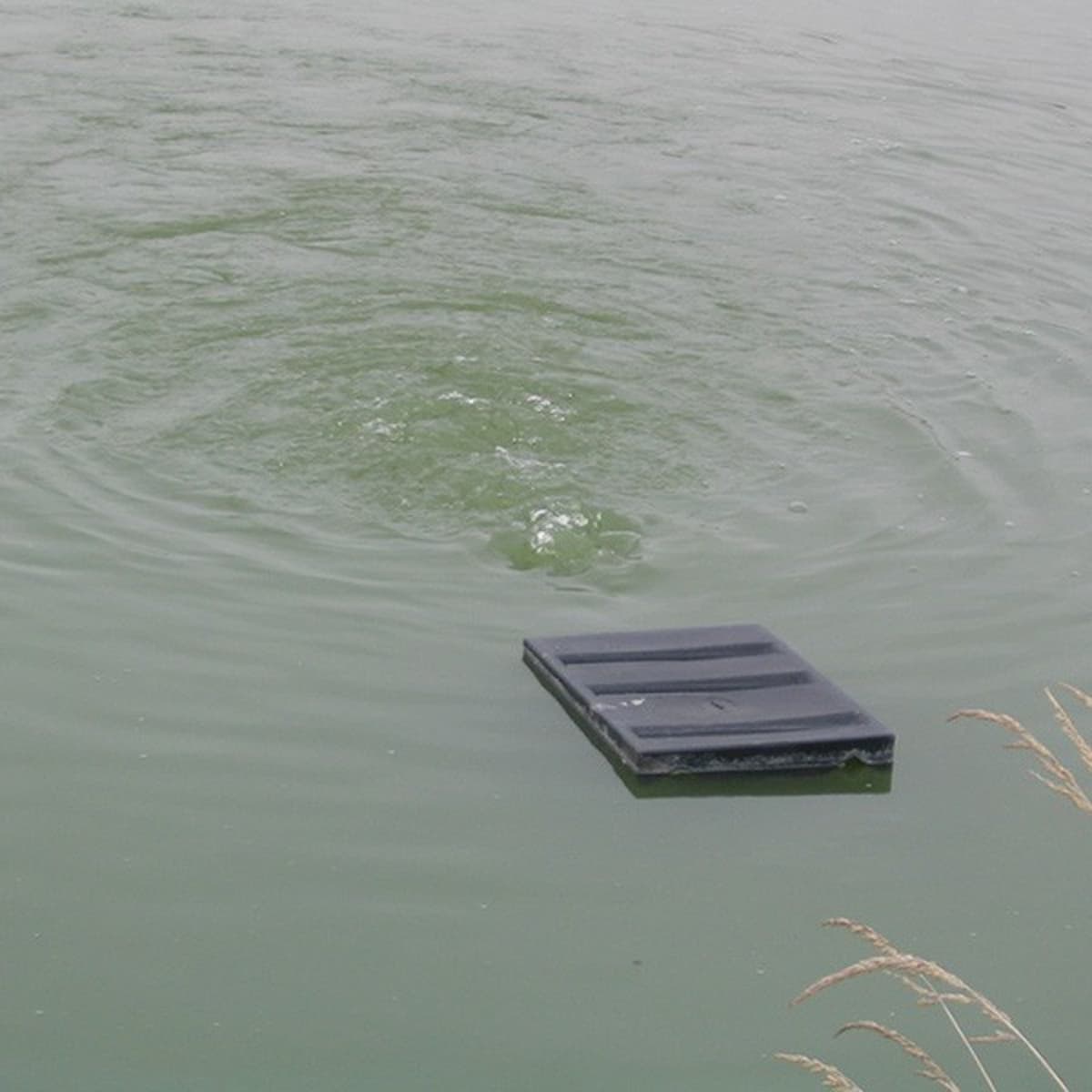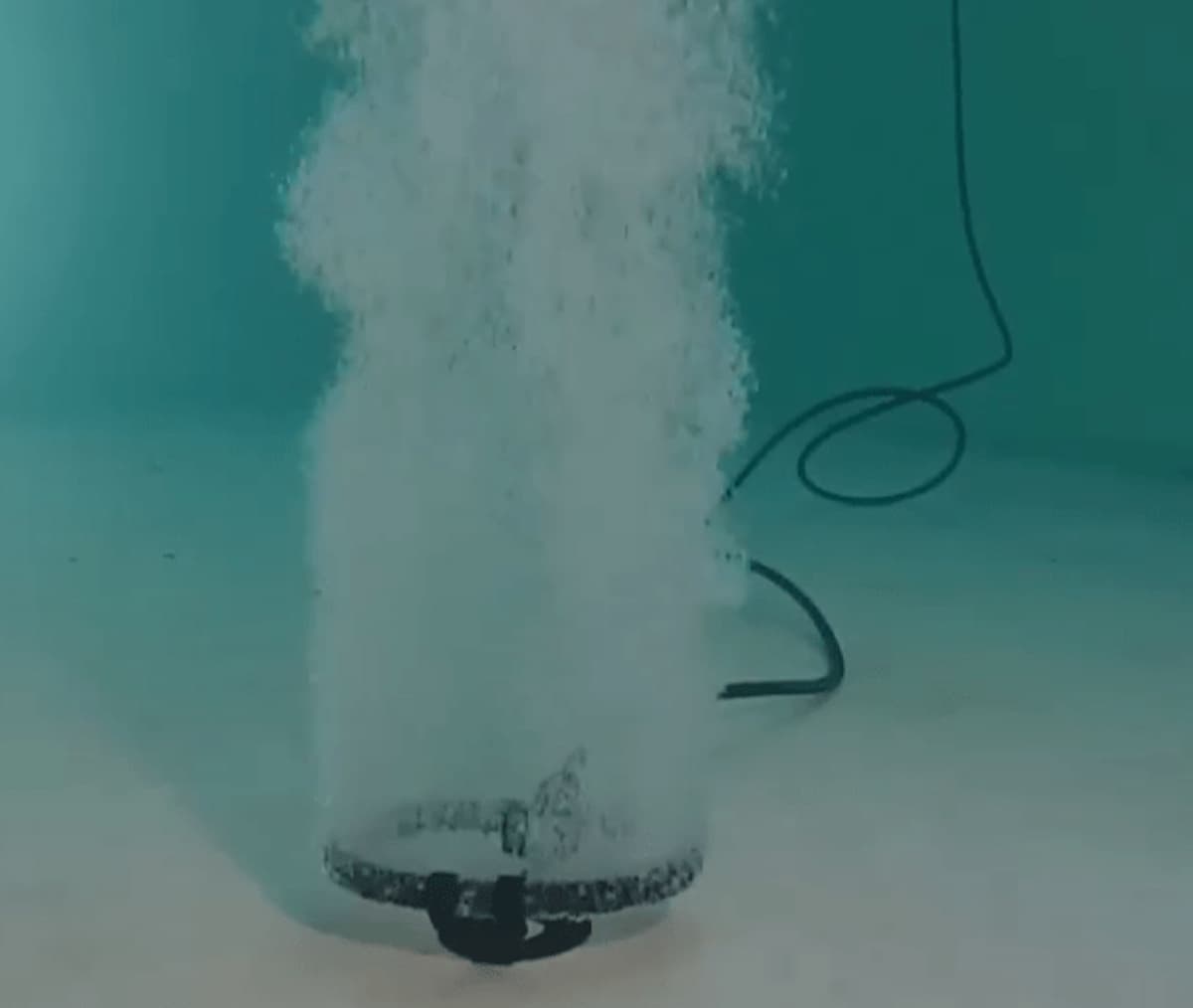Belüftungseffizienz
Es gibt viele Arten von Methoden, um Sauerstoff zu Wasser durch den Prozess der Belüftung einzuführen. Einige Hersteller von Geräten haben ihre Belüftungs Geräte für die Effizienz unter Standardbedingungen getestet. Ein Test gibt das Ergebnis als Standard-Sauerstoff Übertragungs Rate oder SOTR. Die Maßeinheit ist Kilogramm oder Pfund Sauerstoff pro Betriebsstunde. Eine weitere Maßnahme ist die Standard-Belüftung Effizienz oder SAE, die die SOTR geteilt durch die Macht verwendet wird. Die resultierende Messung ist Pfund Sauerstoff pro PS pro Stunde des Betriebes.
Es ist unrealistisch, in der Lage zu sein, die Standard Belüftung-Wirkungsgrad Rate zu nehmen und Sie auf die meisten Teich Situation anzuwenden, weil es viele anderen Sauerstoff Konsumenten in den Teichen außer Fischen gibt. Ehrlich gesagt, diese Zahlen sollten mehr aus der Sicht der relativen Effizienz der einzelnen Geräte betrachtet werden. Es wird auch einige gebildete erraten und möglicherweise experimentieren, um herauszufinden, was am besten für Ihre Anwendung.

Belüftungs Geräte Fountain Type Belüftung (SAE-Raten von 1,5-2.5)
These units shall be defined as any device that splashes the water into the air to create an aesthetically pleasing display. There is a wide range of fountains on the market. Some are designed more for display than aeration and some that mix more aeration with the display.
Profis
+ Can have beautiful displays and add beauty to the body of water or pond
+ Some aeration benefit is seen
+ Works fairly well in small ponds that are relatively shallow
+ Very good at venting off unwanted gases
Nachteile
– Typically will only draw water from the surface to 10′
-Not as efficient at aeration because energy is used to create the display
– Need power near the pond

Oberflächen Belüfter oder Rührwerke (SAE rates of 2.6-3.2)
These units will employ a float, motor, and prop to splash water at the surface. The splashing creates lots of surface area in the water for venting bad gases and allowing oxygen to absorb into the water from the air.
Profis
+ Ideal for smaller ponds
+ Fairly decent oxygen transfer rate
+ Portable and lightweight
+ Inexpensive for the water movement
Nachteile
– Not as efficient at moving water at depths greater than 10′
– Need power near the pond

Wasserkreislauf/Mischer (SAE estimated rates of 1.5-2.5)
A motor mounted horizontally to create directional flow and mixing. You can position them to point in any direction and angle them to address the areas you have issues with, either surface or bottom.
Profis
+ Excellent for causing water movement
+ Can be used for keeping ice off ponds and preventing winter kills in milder climates
+ Can be mounted at variable water depths and can mix deep water
Nachteile
-Not as efficient as other devices at Oxygen Transfer
– Need power near the pond

Diffuse Belüftung (SAE rates of 1.0-4.0)
This type of aeration will typically employ either a compressor or blower. A simple way of keep track of what is what is that a blower is high in volume of air produced but cannot pump air very deep. A compressor is low in air volume but can push air much deeper. In deep ponds, a compressor with a diffuser assembly can be very effective at moving the water and transferring oxygen at the air/water interface. The diffuser head is the working component and is what separates the multitude of brands.
Profis
+ Most efficient in deeper ponds
+ No electricity in the water
+ Not much surface movement
+ Can supply air up to 1 mile from power source for remote applications
+ Very economical in larger ponds and lakes
+ Can be used year round for aeration and winterkill prevention
Nachteile
– Not very portable
– Not as efficient in shallower ponds
Mühlen (SAE rate not calculated as they do not use electricity)
Wind powered units will either drive a small compressor that pushes air to a diffuser membrane or will be connected to some type of paddle that enters the water and moves as the wind blows.
Profis
+ No electricity is required so they can be used in remote areas
+ Visually pleasing piece of equipment
Nachteile
– Will not work in no-wind conditions
– Not portable and installation time makes it necessary that the right installation point is decided the first try
– Will not work when they are needed most in the lazy, hazy days of late summer with little to no wind and overcast skies
– Can “puff” phosphorus into the water column and create an algae bloom due to the on/off nature
Solar Belüfter (SAE not calculated as they do not use electricity)
The typical system uses solar panels to power a small compressor which feeds air to a diffuser in the bottom of the pond.
Profis
+ No electricity is required so they can be used in remote areas
Nachteile
– Will not work when the sun is not out unless you have a battery bank
– Very expensive and reliability is based on sun and location
Paddlewheels (SAE rates of 2.5-4.0)
Paddlewheels are just as they sound, a shaft with blades that is spun by a motor or a PTO from a tractor. As the blades spin, they enter and exit the water and splash the surface. Paddlewheels have come a long way in the past 10 years. Past designs had inherent problems that caused premature wearing of the gear boxes. New designs have better balancing and less wear. A note of caution, most imported motors have a spline shaft that does not match up with American-made motors and can cause repair difficulties.
Profis
+ Most efficient surface aerator
+ Can cause directional flow while aerating
Nachteile
– Will not be efficient in deeper ponds
– Units are typically bulky and not very portable
Aspirators (SAE of 1.8-2.3)
These units employ an above water level motor, extended shaft, propeller, and draft tube to suck in air. They can be adjusted to point the propeller in several angles.
Profis
+ Cause directional flow to address dead spots
+ The ability to angle the prop into the water makes these units more effective at moving water in deeper ponds
Nachteile
– Oxygen transfer is not quite as good as other devices
– Some units have premature failure in the area of the extended shaft
Pump-oder Kaskaden Wasser (SAE rates vary)
This method is designed after Mother Nature. If water has to be pumped into a pond or body of water, you might as well splash it to take advantage of the oxygen transfer from the air/water contact.
Profis
+ Free aeration
+ Natural look to the pond or body of water